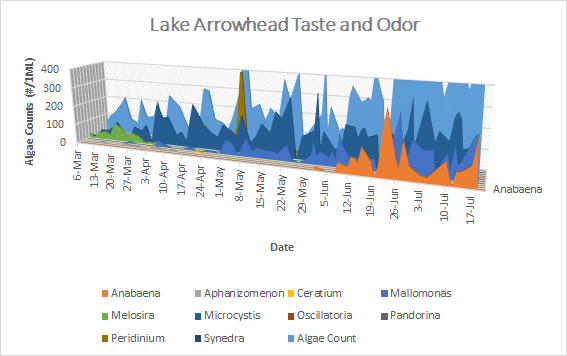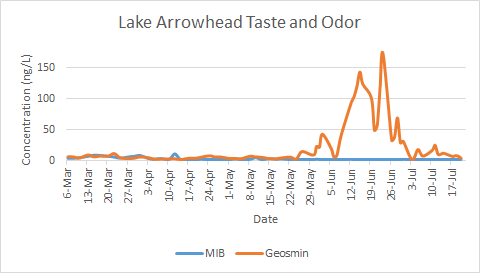March 2019 — Harmful algal bloom (HAB) season is fast approaching. The City of Wichita Falls, Texas, however, has developed an integrated approach to monitor HABs that has prevented taste and odor events for the past two years. Featured in the December 2018 issue of OpFlow, and now in the Jan/Feb 2019 issue of Texas H2O, the City of Wichita Falls shares its integrated approach to answer the following questions:
1. Are cyanobacteria present in the reservoir?
2. What quantity of cyanobacteria are present?
3. Can the species produce toxins?
4. What is the concentration of cyanotoxins?
5. How do we know if we have a problem?


Pictured above: Algae counts measured by FlowCam saw elevated levels of Anabaena in June (top). A spike in Anabaena is used as a predictive indicator of an impending taste and odor event, as it often correlates with a spike in geosmin (bottom) as measured by GC-MS.
No single method can predict or prevent HABs. Learn which methods the City of Wichita Falls use and how they've prevented taste and odor outbreaks for the past two years and counting.
Download the article from Texas H2O here, or learn more about how the FlowCam imaging flow cytometer is used for monitoring drinking water quality.










